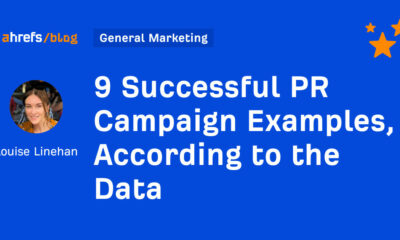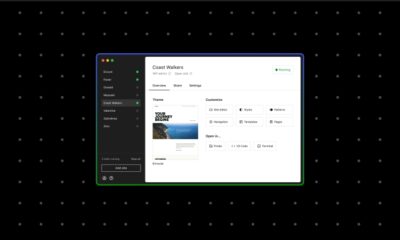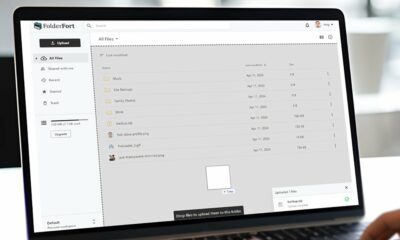SEO
How Impression-Based KPIs Drive Campaign Performance

Digital marketers can be our own worst enemies.
After years of touting that we can track everything and derive a precise ROAS from digital marketing, the expectation is that we can continue to do so.
And while it is true that digital marketing offers far greater opportunities for uncovering the ROI of specific tactics and channels, it sometimes feels like this trackability has overshadowed the impact of softer, top-of-the-funnel KPIs.
Don’t get me wrong.
Advertisers should still use metrics like ROAS, ROI and LTV/CAC (lifetime value/customer acquisition cost) as north star metrics when distributing budget across channels and tactics.
But building demand for tomorrow at the top of the funnel requires a different mindset which can make some marketers (and, let’s face it, their CFOs) uncomfortable.
The good news is that higher-funnel initiatives influence conversions down-funnel, and there are a variety of ways to measure it.
In this article, you will learn impression-based KPIs you need to know as well as native and paid tools you can use to measure impression influence.
The Challenge
The buying experience has undergone rapid change over the last decade, and marketers and leadership have not caught up to buying behaviors.
At the root of the problem lies the difference between buyer behavior and attribution.
Here’s why:
- Buyers are not on a linear path.
- Buying committees often drive decisions, not individuals (this is especially true for B2B). This means advertising has to reach multiple individuals on the path to a final purchase.
- Users are more savvy, skeptical, and inundated than ever before. Therefore, the frequency of viewing strong creative is critical to building awareness, interest, and consideration.
Meanwhile, company leadership often makes decisions on antiquated attribution models, like the last-click which ignores the very nature of buyer behavior.
So, how do you show the value of top-of-funnel advertising?
Conducting in-depth brand awareness studies is certainly an option for large advertisers.
But for smaller advertisers or those wanting to get a quick understanding of results, impression-based KPIs are a great way to optimize your top-of-funnel advertising.
Impression-Based KPIs To Know
If an impression is on the path to conversion, it has value.
Consider your own experiences.
How many times have you seen an ad influence a future decision?
You may not have clicked the ad.
It may have taken a day for you to act on it, but it clearly influenced your thinking.
Those advertisers weren’t able to precisely quantify the value that impression/view had, but they knew enough to know it was valuable.
Quantifying what that value is can be tricky.
But here are some key KPIs that should be included when evaluating the success of top-of-funnel advertising:
Lift In Brand Search Impression
Top-of-funnel (TOF) initiatives drive brand awareness, which creates search demand.
As a result, this is one of the best proxies of success for TOF initiatives
Engagement/click-through-rate
Brands that have more marketplace awareness who cleverly communicate their value proposition and differentiators see higher click-through rates.
A pre-TOF initiative/post-TOF initiative analysis of CTR will provide insights into whether your efforts are paying off.
Engaged View Conversions
On YouTube and Display (using video in the responsive ad unit), an engaged view conversion is counted when at least 10 seconds of a skippable in-stream ad is watched (or the whole thing if shorter than 10 seconds).
View-through Conversions
View-through conversions tell you that your ad was seen along the path to conversion, despite it not being clicked.
While not nearly as valuable as a click-based conversion, it still holds value when evaluating the performance of prospecting campaigns where a prospect has not yet engaged with you.
Audience Saturation
Reach, frequency, and audience saturation can be a great KPI if you have well-defined audiences.
Examples of defined, high-value audiences include customer match lists, pixel-based retargeting lists, Custom audiences using the Searched on Google setting and account-based-marketing (ABM) audiences.
This is less valuable of a metric with ambiguous targeting, such as similar tos and lookalikes or when using “optimized” targeting.
On search, impression share can provide you audience saturation insights.
Native Tools To Help You Measure Impression Influence
Attribution is hard. And messy.
No matter what a salesperson tells you, there is no one-size-fits-all solution for attribution — especially when you are trying to quantify impression-focused KPIs.
Breathe easy though.
Here are five ways to measure impact using native tools:
- Add relevant impression-focused metrics (above) to your platform views, internal dashboards and client reporting. For example, showcase when TOF initiatives lead to brand impressions surging higher.
- Run a geo holdout test activating TOF initiatives in select markets, but not in others. Then, evaluate impact based on market-level lead, pipeline and revenue data (including all traffic sources).
- Create a custom column that combines click-conversions and weighted view-through conversions to better understand the impact a keyword or audience segment has. Then, use that info to set target CPA bids.
- Utilize lift studies with Google and Facebook for a more automated way to learn more about the incremental impact of ads.
- Using Google Analytics user groups, create an “exposed” and “unexposed” group and serve retargeting ads to one group. Then, measure downstream KPIs to identify the impact of retargeting impressions.
Paid Tools To Measure Impression Influence
While other tools exist, I can directly speak to the Google Marketing Platform products. Both Google Analytics and Google Analytics 360 (GA360) provide buyer journey reporting under Attribution > Conversions > Top Conversion Paths.
However, GA360 includes Google-based impression activity in these paths.
Another GMP product, Campaign Manager 360 (CM360), provides impression data beyond the Google ecosystem.
Here, you can place impression tags on non-Google vendor URLs (eg. Twitter and Reddit) to get a more comprehensive look at how impressions influence the buying process.
This can be valuable information when media planning, because a TOF initiative may not get credit by solely examining click-based KPIs.
For example, we recently had a client observing poor lead performance on Reddit.
We were considering cutting it, but we looked at our CM360-fueled Tableau dashboard and saw that Reddit was actually the first brand exposure (without click) 41 times.
This data showed that while on the surface, there was no conversion activity associated with the channel, it was introducing people to the brand, who were later clicking on another CM360-tagged link, then converting.
Conclusion
An impression to the right audience has value.
If you want to build a future-proof marketing program, demand must be generated through TOF initiatives that value non-click conversion points.
While it is hard to quantify sometimes, there are multiple indicators you can use to help you determine whether the channel or tactic is effective.
In summary, you should:
- Determine your impression-centric KPIs and their values.
- Communicate (and align) with stakeholders on what success looks like throughout the funnel.
- Ensure your media mix, strategies and tactics are informed by said KPIs.
More resources:
Featured Image: H12/Shutterstock



![Scale Efforts and Drive Revenue [Webinar] AI & Automation for SEO: Scale Efforts and Drive Revenue](https://articles.entireweb.com/wp-content/uploads/2024/10/Scale-Efforts-and-Drive-Revenue-Webinar-400x240.png)
![Scale Efforts and Drive Revenue [Webinar] AI & Automation for SEO: Scale Efforts and Drive Revenue](https://articles.entireweb.com/wp-content/uploads/2024/10/Scale-Efforts-and-Drive-Revenue-Webinar-80x80.png)




![Holistic Marketing Strategies That Drive Revenue [SaaS Case Study] Holistic Marketing Strategies That Drive Revenue [SaaS Case Study]](https://articles.entireweb.com/wp-content/uploads/2024/09/Holistic-Marketing-Strategies-That-Drive-Revenue-SaaS-Case-Study-400x240.png)
![Holistic Marketing Strategies That Drive Revenue [SaaS Case Study] Holistic Marketing Strategies That Drive Revenue [SaaS Case Study]](https://articles.entireweb.com/wp-content/uploads/2024/09/Holistic-Marketing-Strategies-That-Drive-Revenue-SaaS-Case-Study-80x80.png)








You must be logged in to post a comment Login